Kuramaa tasku/linnus II II maailmasõda
Kuršo kišenė arba Kuršo tvirtovė arba Kuršo katilas (latv. Kurzemes katls, Kurzemes cietoksnis, vok. Kurland-Kessel, Kurland-Festung; rus. Курляндский котёл, блокада Курляндспкой projektuoja theвкокогрондспкой) Kuržemės ir iš dalies Žiemgalos regionų teritorija, kur per Antrąjį pasaulinį karą, nuo 1944 m. spalio mėn. iki 1945 m. gegužės mėn., Vokietijos armijų grupė „Šiaurė“, vėliau pervadinta į Kuržemės armijų grupę, buvo atkirsta 1-ojo ir 2-ojo Raudonosios armijos Baltijos frontų.
Kuršų kišenė ir Kuršo tvirtovė Antrojo pasaulinio karo metais buvo naudojamos propagandos tikslais.
Your comments
Related objects
Saldus Saksa sõdurite kalmistu
Saldus Saksa sõduri kalmistu asub Saldus-Ezere maanteel. 8 hektari suurusele kalmistule maeti ümber umbes 25 000 Saksa sõdurit ja mõned Läti leegionärid. Ümbermatmine on toimunud 1997. aastast.
1. maist 1. oktoobrini saab mälestustoas vaadata ekspositsiooni Kuramaa lahingutest. Sel perioodil on mälestustuba avatud tööpäeviti 9.00-17.00, laupäeviti ja pühapäeviti on kalmistul ka matkajuht. Samuti on kättesaadavad Saldusse maetud sõdurite ja langenud sõdurite registrid kogu Lätis.
Sõjaliste esemete ja õmblusmasinate erakogu
Ainus õmblusmasinate kollektsioon Lätis, kus on üle 200 erineva õmblusmasina sõjaeelsest ja nõukogude perioodist, mis mängisid sõjaeelsetel ja sõjaaastatel otsest rolli sõjaväerõivaste tootmises. Kollektsiooni looja - Juris Beloivans
Nõukogude sõdurite kalmistu "Tuški"
Punaarmee 130. Läti ja 8. Eesti laskurkorpuse sõdurite vennaskalmistu asub umbes 350 meetrit Blīdene-Remte maanteest edelasse. Nimi tuleneb Tušķi talust, mis asus kalmistust 400 m lõuna pool.
17. märtsil 1945 algas Punaarmee viimane katse Kurzemes. Läti 308. laskurdiviis ründas Tušķi kodutalust edela ja lääne pool ning kolme päeva kestnud lahingutegevuse käigus ületas Blīdene-Remte maantee 142.2. kõrgendikul ja jõudis Jaunāsmuižas-Mezmali joonele. Lahingute käigus hukkunud sõdurid maeti mitmesse väikesesse kalmistusse Ķēķiai, Vērotāji, Jaunāsmuiža ja mujal.
1960. aastate lõpus, kui Nõukogude Liit hakkas mälestama Teise maailmasõja langenuid, rajati Tušķu kodutalu varemetest põhja poole uus kalmistu, kuhu plaaniti ümber matta kõik Pilsblidene ja Kaulači piirkonnas langenud sõdurid. Tegelikkuses oli ümbermatmine osaline, sest väga sageli jäid langenud sõdurid oma algsetele hauaplatsidele, kuid Tuški vendade kalmistule kirjutati üle ainult nende nimed. Tuški vendade kalmistul võib leida ka 8. Eesti laskurkorpuse sõdurite nimesid, kelle peamine sõjaaegne kalmistu asus praeguse Pilsblidene kalmistu asukohas.
Seal on ka mälestusmärk 8. Eesti Laskurkorpuse sõdurile Jakob Kunderale, kellele on pühendatud objekt "Kundera punktid". Kohe pärast lahingut maeti Jakob Kundera praegusele Pilsblidene kalmistule ja hiljem maeti ta ümber Tuški vennaskonna kalmistule.
Ümberehitatud Saksa armee kaevikud Melnsilsi laagriplatsil
Melnsilsi kämping asub mere ääres 10 km kaugusel Kolkast. Seal on võimalik ööbida taasrajatud Saksa armee tüüpi muldonnides ,kuna Teise maailmasõja ajal asusid siin Saksa sõjaväe piirivalvekordon ja laagriplats ning sõdurid ehitasid endale ümbruskonnast leitud materjalidest liivaluidetesse onnid. Rannikuluidetest võib endiselt leida kaevikuid.
Kämpingus on kaks muldonni: Punker 13 on suurem ja selles on kolm narivoodit; väikeses onnis on kaks narivoodit. Melnsilsi kämping sobib kuni 300 inimesele aktiivse puhkuse ja spordiürituste korraldamiseks. Selle lähedal asuvad Slītere looduskaitseala, järsk mererannik ja metsarajad. Ümbritsevasse loodusesse on maha märgitud jalgrattarajad. Mere ääres asuvad telkimis- ja lõkkekohad, rannas võib ööbida kahe- ja neljakohalistes tünnimajades. Rannas on ka saun, kus võib vihelda erinevate vihtadega.
Vaiņode jaam
Jaamahoone avati koos Liepāja-Vainode raudteeliini ehitamisega 1871. aastal. Jaamahoone ise avati 1872. aastal. Sellega algas ka suur tegevus Vaiņode kesklinna tänavate arendamisel. On märkimisväärne, et tolleaegsetes teejuhtides oli iga hoone või objekti kaugus raudteejaamast märgitud. Raudteejaam oli kunagi oluline sõjalise transpordi sõlmpunkt.
Esimese maailmasõja ajal ehitati jaamast lennuväljale harutee, mis tõi materjale (metallvormid angaaride jaoks), kraanasid, vintsid ja laskemoona sõjavarude jaoks, mida seejärel veeti zeppeliinidega Riiga ja pommitati Vene kindlustusi.
Raudteejaama hoone ei kannatanud Teise maailmasõja hävitustööde tõttu ja ei ole oma välimust aja jooksul muutnud. Vaiņode jaam on nähtav väljastpoolt.
Sõjaline tegevus Vaiņode ümbruses on seotud Punaarmee eduka pealetungiga, mis algas 5. oktoobril 1944 Šiauliai ümbruses. Saksa nõrga vastupanu kiiresti purustades said Nõukogude tankiüksused ülesandeks hõivata strateegiliselt tähtis Liepāja-Shauli raudteeliin. 9. oktoobri 1944. aasta varahommikul alustasid 19. panzerkorpuse 79. tankibrigaadi esimesed üksused ja 143. tankibrigaadi eraldiseisvad üksused pealetungi. Saksa rinde kokkuvarisemise tulemusena olid Vaiņode idapoolses ääres ainult Saksa 61. jalaväediviisi väikesed üksused, mida toetasid soomusrongid. Vastupanu oli kiiresti ületatud ja 9. oktoobri õhtuks oli kogu Vaiņode täielikult Punaarmee kontrolli all. 10. oktoobril saabusid Nõukogude 6. kaardiväe 103. laskurkorpuse üksused, kes jätkasid rünnakuid ja surusid Saksa 61. jalaväediviisi 2 km Skaistkalne sanatooriumist põhja pool tagasi. Kuna nõukogude väed vallutasid Vaiņode vähese võitlusega, kannatasid Vaiņode jaam ja linna hooned suhteliselt vähe.
Võitlused jõudsid Vaiņodele veidi lähemale 24. oktoobril 1944, kui Saksa 10. korpus, eesotsas 14. panzerdiviisiga, viis läbi pealetungioperatsiooni, mis kandis hüüdnime "Eberhard". Lahingute käigus kindlustati rindejoon vahetult sanatooriumist põhja pool ja jäi sinna kuni 27. oktoobrini, mil Punaarmee alustas 1. Kuramaa bolšoi nime all tuntud pealetungi.
Pilsblidene mõis
Mõis on ehitatud klassitsistlikus stiilis 19. sajandi 1920. aastatel. Pärast maareformi renditi mõisakompleks välja eraisikutele, kuid alates 1932. aastast läks see üle Rahvahoolekandeministeeriumile.
6. Suure Kuramaa lahingu ägedate lahingute ajal kasutati seda nii tugipunktina kui ka haiglasena.
17. märtsil 1945 algas Punaarmee viimane katse rünnata Kuramaad. Saksa 24. jalaväediviisi üksused kaitsesid end Pilsblidene mõisakompleksi ümbruses. 18. märtsil 1945 ründasid mõisat lõunast 43. kaardiväe Läti laskurdiviisi 121. laskurirügement, mis ebaõnnestus. Lääne poolt ründas 7. Eesti laskurdiviisi 300. laskurirügemendi 1. pataljon ja päeva lõpus liitus 3. kaardiväe mehhaniseeritud korpuse 35. tankibrigaad 249. Eesti laskurdiviisi 917. laskurirügemendi 1. pataljoniga Blīdene-Remte maanteel.
Ööl vastu 19. märtsi jõudis Blīdene jaama lähedusse 19. Läti SS-grenaderidiviisi 43. Grenaderirügement ja astus vasturünnakusse, et vallutada tagasi Pilsblīdene mõisa elamu. Öise tankirünnaku tulemusena said aga Punaarmee eesti ja läti üksused jaama juures jalad alla.
1959. aastal puhkes lossis tulekahju. Aastatel 1961-1986 tegutses elumajas vanadekodu. 1986. aastal hävis loss taas tulekahjus. Sellest ajast peale on loss seisnud tühjana ja varemetes.
Mõisahoonet ümbritseb 24 hektari suurune park, mis on nüüdseks võsastunud. Pargis on umbes 37 istutatud mitteresidentaalsete puu- ja põõsaliikide istandust ja see on riikliku kaitse all. Park on hooldamata ja selle ümbrus on võsastunud.
Ezere kohalik ajaloohoidla "Muitas Nams" ("Tollimaja")
Ezere tollimaja asub Ezeres Saldus-Mažeikiai maantee lähedal Läti-Leedu piiril. Selles hoones kirjutati 8. mail 1945 alla nn Kuramaa taskusse piiratud Saksa armeeüksuste "Kurzeme" (Kuramaa) kapitulatsioonilepingule. Arvatakse, et Teine maailmasõda lõppes tegelikult Ezeres. Tollimajas on II maailmasõja lõpu sündmusi kajastav väljapanek ja Ezere valla ajalugu vanast ajast kuni tänapäevani kirjeldavad eksponaadid. 7. mai 1945. aasta hommikul saatis Leningradi rinde ülem marssal L. Govorov armeegrupi "Kurzeme" juhtkonnale ultimaatumi, et see paneks relvad maha. Üleandmisakt allkirjastati asjaosaliste poolt 8. mail ja selles kirjeldati üksikasjalikult üleandmise korda, relvade kogumiskohti, esitatavaid dokumente ja andmeid ning muid praktilisi meetmeid.
Sõduri kalmistu Priekule mälestusansambel
Priekule vennaskalmistu memoriaalansambel Liepāja-Priekule-Skoda maantee kõrval on suurim Teises maailmasõjas osalenud Nõukogude sõdurite matmispaik Baltimaades. Siia on maetud üle 23000 Nõukogude sõduri. Operatsioon „Priekule“ oli üks ägedamaid Kuramaa koti lahinguid, mis kestis 1944. aasta oktoobrist kuni 1945. aasta 21. veebruarini. Priekule lahing 1945. aasta veebruaris kestis ilma katkestusteta seitse päeva ja ööd ning nõudis mõlemal poolel väga palju ohvreid. Kuni Priekule vennaskalmistu ümberkujundamiseni memoriaalansambliks asus siin silmapaistva läti skulptori Kārlis Zāle (1888–1942) viimasena tehtud mälestusmärk, mis oli mõeldud vabadussõja mälestuseks Alojasse. Aastatel 1974–1984 kujundati Priekule vennaskalmistu 8 ha suurune ala ümber Teises maailmasõjas langenute memoriaalansambliks. Selle kujundasid skulptor P. Zaļkalne, arhitektid A. Zoldners ja E. Salguss ning dendroloog A. Lasis.
Pelči mõisaloss
Pelči mõis asub Kuldīga piirkonnas Pelči vallas. Lossiekskursioonid tuleb ette tellida. Pelči mõis ehitati aastatel 1903–1904. See on arhitekt Wilhelm Neumanni autoritöö ja üks silmapaistvamaid 20. sajandi alguse mõisalosse Lätis. Arhitektuurikeeles on kasutatud renessansi, baroki ja juugendstiili kompositsioonilisi põhimõtteid ja elemente. 19. sajandi lõpust 1920. aastani kuulus mõis vürst von Lieveni perekonnale.
Pelči mõisalossis asus aastatel 1944–1945 Kuramaa kotis oleva Saksa väegrupi Nord staap (alates 25. jaanuarist 1945 kandis väegrupp nime Kurland). Väegrupi Nord staap kolis Siguldast Pelči mõisahoonesse 23. septembril 1944, sest 18. armee väed kavandasid taganemist Eestist. Staap jäi siia kuni 1945. aasta mai keskpaigani, kui pärast väegrupi Kurland kapitulatsiooni anti info ja dokumendid üle Punaarmee ohvitseridele.
Nygrande mõisa ait
Nīgrande kohalik ajaloo hoidla asub Nīgrande külas, Nīgrande põhikooli kõrval asuvas mõisahoones ja sinna pääseb sisse ettetellimisel.
Sõjaajaloo osakond sisaldab näitust Teise maailmasõja kohta ning pärast sõda ja hiljem leitud originaalseid esemeid ja varuosasid. Samuti saab teada lugusid ja näha fotosid Nygrande ja selle ümbruse kohta Vabadussõjast, Teisest maailmasõjast ja sõjajärgsest ajast ning elust kolhoosis nõukogude ajal.
Näitusel on eriline koht kohalikule kirjanikule Jēkab Janševskisele ja tema teostele ning seal on ka traditsioonilist mõisamiljööd ja -mööblit tutvustav näitus. Nīgrande mõisa laudas on välja pandud ka Nīgrandest leitud mammutihammas.
Zlēku tragöödia mälestuspaik
Mälestusmärk asub Zlēki mõisaansambli lähedal, Karātavkalnsi lääneosas. Umbes kakskümmend kiviklibu hukkunute nimedega moodustavad ringi ja keskel on umbes kolme meetri kõrgune mustast marmorist obelisk.
Osa hukkunutest on ümber maetud Zlēki mälestusmärgi juurde.
1944. aasta detsembris viis Saksa natside armee Zlēki ümbruses läbi ulatusliku operatsiooni tsiviilelanikkonna vastu. 9. detsembril 1944. aastal kell 17.30 on armeegrupi Nord lahingutegevuse päevikusse tehtud kanne, et "Rubensi brigaadi ja Punase Noole üksuste" 161 inimest on selle tegevuse käigus vaenlase poolt hukkunud. Nõukogude ajal võeti see arv ilmselt Zlēki tragöödia ohvrite koguarvuks, viidates tapetud tsiviilisikutele.
Aktsiooni käik on osaliselt dokumenteeritud Saksa 16. armee vastuluureosakonna juhataja 31. detsembri 1944. aasta aruandes. Selles selgitatakse, et 5.-9. detsembrini toimus 5. ja 9. detsembri vahel Ida-Virumaa kõrgeima SS- ja politseijuhi, SS Oberruppenführer ja politseikindral Friedrich Jekelni juhtimisel Eichensumpfis ("Tamme soos") ulatuslik operatsioon "Punanoolte" ja kindral Kureli rühma jäänuste vastu Abavas.
Paadireis Ciecere järvel paadiga "Zezer"
Sõites lõbusõidulaevaga Zezer mööda Brocēni lähedal asuvat Ciecere järve võite kuulata audiogiidi ja kapteni jutte Ciecere järvest ja selle kaldal asuvast Brocēni linnast, Teise maailmasõja sündmustest Ciecere järve ümbruses, kaevikutest mõlemal pool järve, Tammesaarest, vaatetornist mööda kulgevast tankiteest ja järve uppunud tankist. Audiogiid on saadaval neljas keeles: läti, leedu, inglise ja vene keeles. Sõit kestab 1 tund ja 15 minutit.
Pagulaste mälestussilt "Sail of Hope" Jūrkalnes
"Lootuse purje" mälestusmärk Teise maailmasõja põgenikele, kes 1944. ja 1945. aastal laevaga Läänemere kaudu Gotlandi saarele Rootsis jõudsid. Mälestusmärk asub Osvalkis mere ja Ventspils-Liepaja maantee vahelisel luideteel, ühistranspordipeatuse "Kaijas" lähedal. Selle on loonud skulptor Ģirts Burvis, kes realiseeris selle kui Läti pagulaste mälestust sümboliseeriva lootuse purje.
1944. aasta sügisest kuni 1945. aasta kevadeni püüdsid mõned Läti kodanikud, kartes uut Nõukogude okupatsiooni, kuid mitte soovides evakueeruda laastatud ja ohustatud Saksamaale, jõuda meritsi lähimasse neutraalsesse riiki, Rootsi. Osa paate organiseeris Läti Kesknõukogu lääneliitlaste abiga, mille tulemusel tekkis üks suurimaid pagulaste koondumiskohti Jūrkalnesi vallas. Lisaks Läti Kesknõukogu korraldatud paatidele viidi üle mere ka teisi paate. Hinnanguliselt õnnestus merd ületada umbes 5000 inimesel. Hukkunute arv ei ole teada, sest Kurzeme rannikult lahkunud pagulaste kohta ei peetud arvestust.
Reisid olid ohtlikud, sest põgenikke ohustasid rannikul ja merel Saksa patrullid, meremiinid, nõukogude lennukid ja sõjalaevad, samuti tormid, sest ülepääs toimus sageli ebasobivate ja ülekoormatud kuttide ja paatidega, millel puudusid piisavad kütuse- ja toiduvarud, merekaardid ja navigatsioonivahendid. Väljumine Lätist toimus salaja. Paatide sihtpunktiks oli Gotlandi saar, ja kõige sagedamini alustati sõite Kuramaa läänerannikult (Jūrkalne ja Gotlandi vahel on 90 meremiili ehk umbes 170 kilomeetrit linnulennult).
Punaarmee sõdurite mälestuspaik "Pieta" Nīkrāce vallas
Nõukogude sõdurite kalmistu asub Skrunda - Embute - Priekule maanteel, mis asub kahe jõe, Dzelda lõunas ja Koja põhjas, vahelisel kõrgendikul. Sinna on maetud üle 3000 langenu.
Teise maailmasõja lahingud
Punaarmee alustas alates 27. oktoobrist 1944 pealetungioperatsiooni, mida nüüd tuntakse 1. Kuramaa pataljoni nime all, eesmärgiga hävitada Saksa armeegrupp "Põhja", mis hiljem nimetati ümber "Kuramaaks". 5. novembriks jõudsid Nõukogude 61. armee ning osad 6. kaardiväe ja 4. šokkarmee Zeldi jõe äärde ning mõned 5. kaardiväe panzerarmee üksused hõivasid sillapead jõe põhjakaldal. Enne järgmist rünnakut viidi sellesse sektorisse 1. Balti rinde 2. kaardiväearmee, et jõuda Skrunda-Liepaja raudteeliinini. Pärast esialgse sissetungi saavutamist jätkaks 5. kaardiväe panzerarmee rünnakut Kuldīga suunas.
Kuramaa 2. lahingu algus viibis ilmastikuolude tõttu ja algas alles 19. novembril. Punaarmee saavutas oma suurimad edusammud praeguse Vennaskonna kalmistu ümbruses ning 24. novembri õhtuks olid 1. ja 60. laskurkorpus vallutanud Koj jõe põhjakaldal asuva placdarmi. Kuid Punaarmee edu lõppes seal. Saksa armeegrupp Põhja aimas nõukogude rünnakute suunda ja koondas siia sobivad jõud, sealhulgas kaks pantserdiviisi.
26. novembri 1944. aasta õhtul peatati Punaarmee rünnakud ja kuni Teise maailmasõja lõpuni ei tehtud enam ühtegi katset Saksa vägede hävitamiseks Kuramaal. Järgnenud lahingutes oli ülesanne takistada Saksa armee evakueerimist Kuramaalt.
Punaarmee 8. Eesti Laskurkorpuse mälestusmärk
Punaarmee 8. Eesti Laskurkorpuse sõdurite mälestusmärk asub Kaulači poolmõisa talu varemetes umbes 100 meetrit maanteest edelas.
17. märtsil 1945 algas viimane Punaarmee pealetungi katse Kuramaal. Eesti 8. laskurkorpuse 7. laskurdiviisi ülesanne oli jõuda Blidene jaamast lääne pool Riia-Liepaja raudteeliini ja kindlustada 3. kaardiväe mehhaniseeritud korpuse rünnakut Gaiki suunas. 17. märtsi õhtuks jõudis 354. laskurirügement läbi metsa Kaulači poolmõisast lõuna pool raudteele ja jätkas rünnakuid loode suunas, jõudes Pikuliai majade juurde. Kaulači poolmõisas ja kaugemal kirdes asusid saksa Burg-Stellung'i positsioonid, mida kaitsesid 329. jalaväediviisi üksikud üksused. Kogu 18. märtsi päeva jooksul jätkusid 354. laskurirügemendi rünnakud edutult.
18. märtsi õhtul asendas 354. laskurirügementi 27. laskurirügement. Rünnakus tuli kasutada ka 3. kaardiväe mehhaniseeritud korpuse 7. mehhaniseeritud brigaadi eelüksust, 1. motoriseeritud pataljoni koos ühe tankikompaniiga. 19. märtsi õhtuks olid nõukogude väed kontsentreeritud rünnakuga vallutanud Kaulauchi poolmaasooli, hõivates osa sakslaste rajatud kaitseliinist domineerival kõrgendikul.
Kuni 1945. aasta märtsi lõpuni jätkusid 8. Eesti laskurkorpuse ja 3. mehhaniseeritud korpuse rünnakud Wikstraute ja Remte suunal, kuid edutult.
Lahingute ajal asus Kaulači poolkinnistul eri tasandite staap ja 1975. aasta mais avati seal mälestuskivi.
Vanade autode kollektsioon "Retroknifiņš"
Zvārde vallas on ka erakogu. See sisaldab nii sõidu- ja veoautosid kui ka mootorrattaid.
Kollektsioonis on restaureeritud Saksa sõjaväe BMW mootorratas, mis oli siin juba Kurzeme Koteli piiramise ajal, samuti mitmed Saksa autod, mis jäid siia pärast Saksa sõjaväegrupi "Kurland" kapitulatsiooni.
Selle kollektsiooni on loonud entusiast Jānis Dobelis. Kui broneerite eelnevalt aja, on omanik valmis teid vastu võtma ja andma teile iga eksponaadi kohta täieliku kirjelduse.
Ratsutamine ja ekskursioonid Paplaka ja Priekule vaatamisväärsuste juurde
Stiebriņi talu omaniku poolt pakutavad temaatilised hobuvankerite ekskursioonid, näiteks hobuvankrisõit raudteetammil, kuulates giidi juttu tööstuspärandist, on suur elamus. Unustamatu on ka hobuvankrisõit läbi Paplaka ümbruse endiste sõjaväe garnisonide/linnade paikade. Eriti soovitame nõukogude armee elamurajooni laste mänguväljakut, mida kohapeal tuntakse "Disneylandina", soome suvilaid (Soome sõjaaegne panus Nõukogude Liidule), veetorne ja kunagiste Barons fon Korfsi luksushoonete varemed.
Saksa sõjaväe rannavalve otsetorni asukoht Ussis ja piirivalvepunkt Kolkas
Sõjalist infrastruktuuri Kolka neemele ei planeeritud, välja arvatud mitmed avamere tuletornid, mis ehitati ümber pika aja jooksul kas enne Esimest maailmasõda, Esimese maailmasõja ajal või Teise maailmasõja ajal. Rannakaitsepatareid kavandati Irbe väina kitsamasse ossa, Sirvesi poolsaare ja Mihkli torni tuletorni vahele.
Ainsad sõjalise iseloomuga kindlustused ilmusid 1944. aasta lõpus, kui Saksa armeegrupp Põhja valmistas end ette Nõukogude Balti laevastiku võimaliku maabumise tõrjumiseks. 1945. aasta kevadel, pärast jää taandumist, kaitsesid 532. suurtükiväediviisi kaks patareid rannikut Kolka neemel. 7. patarei nelja 75 mm suurtüki ja kolme 20 mm zenitpüssiga. Patarei 8 nelja 88 mm mürsu, kolme 20 mm mürsu ja ühe 81 mm mürsuga. Deserteritõrje jalaväe garnison koosnes Saksa mereväe ühest tuntuimast rannikukaitseüksusest, 531. suurtükiväediviisi 5. kompaniist. Kuigi see oli nime poolest suurtükiväeüksus, oli see kasutuse poolest jalaväeüksus, mis alustas sõda 1941. aasta juunis Liepāja juures. Seejärel oli üksus garnisonis Soome lahe saartel ja võttis hiljem osa lahingutest Saaremaal. Diviisi jäänused formeeriti üheks kompaniiks ja, tugevdatuna seitsme tankitõrjekahuri ja kolme 20 mm õhutõrjekahuriga, paigutati Kolka neemele.
Nõukogude mereväe maabumisoperatsiooni ei toimunud ja Saksa üksused kapituleerusid 1945. aasta mais.
Sõjalist infrastruktuuri hakati Kolka neemel rajama pärast Teist maailmasõda, kui siia paigutati nõukogude piirivalvepostid ja Kolka, nagu kogu Kuramaa rannik Mērsragist kuni Leedu piirini, muutus suletud tsooniks.
Saksa armee betoonist torn (ranna ääres)
Kõndides mööda Odju mäe nõlva 200 m pikkust rada mööda, näete mitmeid Esimese maailmasõjaga seotud objekte - vanu betoonist suurtükkide vundamente. Ranna ääres, paralleelselt metsarajaga mööda Rojase rada seisab pooleli jäänud betoonist vaatetorn. Selle objekti täpne kasutusotstarve on teadmata. Aluse alla on ehitatud niššid laskemoona jaoks. Mändide vahel on näha ka sügavad kaevikud, endised kaevikud.
Mõned objektid pärinevad tõenäoliselt Teise maailmasõja lõpust, mil piirkonnas paiknesid Saksa rannakaitsepatareid. Mereväe 532. suurtükiväediviisi 4. patarei oli relvastatud nelja 88 mm suurtükiga, kolme 37 mm suurtükiga, ühe 20 mm neljarelvalise suurtükiga ja ühe 50 mm mürsuga öiseks valgustamiseks. Kaks 45 mm tankitõrjekahurit on paigutatud Rojasuu äärde. Linna garnison koosnes 64. ja 109. sapöörpataljoni üksustest.
Ķērkliņu kiriku varemed
Die Ruinen der Kirche von Ķerkliņu befinden sich etwa 5 Kilometer nordwestlich von Kokmuiža, in der Nähe des Ķerkliņu-Sees. Die Kirche wurde 1641 von Heinrich von Dönhoff (Derkarth), dem Besitzer des Gutshofs Ķerkliņi, erbaut. Die ursprüngliche Holzkirche wurde durch einen Steinbau ersetzt, unter dem Gräber für die Toten der Familien Dönhof und später Kleist errichtet wurden. Die Gräber wurden bereits während der Unruhen von 1905 zerstört, aber 1949 wurden die Särge von den Gräbern in die Kirche gebracht. Die Kirche war ein Beispiel für den kurzzeitigen Barockstil - ihre Schnitzereien wurden von den Holzschnitzern aus Kuldīga und Liepāja angefertigt. Obwohl die Besitzer des Schlosses und der Kirche zu verschiedenen Zeiten von finanziellen Problemen geplagt waren, wurde die Kirche im Laufe ihres Bestehens mehrmals umgebaut. Sie wurde auch im Ersten Weltkrieg in Mitleidenschaft gezogen, woraufhin die Gemeinde das Mauerwerk 1929 wieder aufbaute und 1934 eine Orgel einbaute. Leider wurde die Kirche während des Zweiten Weltkriegs beschädigt und vieles ging verloren. Es ist daher lobenswert, dass vor dem Wiederaufbau der Kirche im Jahr 1933 viele einzigartige Barockskulpturen fotografiert und inventarisiert wurden und sogar in den Archiven des Denkmalamtes landeten. Mit der Errichtung der Mülldeponie und der Vertreibung der Bewohner wurde die Kirche nie restauriert. Heute sind die Kirchenmauern und der Turm zu sehen.
Virga mõisa muististe hoidla
Virga mõisahärrade majja on korrastatud vanavara hoidla. Siit saab aimu, kes elasid Vārtajase jõe kaldal ja Virgas, aga ka Virga mõisast ja parunite Noldide suguvõsast, aga ka II maailmasõja aegadest ja Virga nõukogude kolhoosi aegadest. . Saab vaid vaadata objekte, aga kuulata saab ka lugusid külastajaid huvitavatel teemadel.
Virga mõis elas aastatel 1944/1945 toimunud Kurzeme katlalahingud nii hästi üle, et lihtne jalutuskäik endise mõisa territooriumil võimaldab tajuda muinasaja hõngu ja endiste mõisaelanike kohalolu. Puhkehetk Rootsi kuninga Karl XII mälestusmärgi "Karlias Zabaksi" juures või spetsiaalselt selleks ette nähtud puhkealal Virga Traditsioonide Maja lähedal on kasulik mitte ainult lõõgastumiseks, vaid ka meeldetuletuseks, et Karl XII veetis 1701. aasta talve. siinsamas Virgas.
Mõisa endises aidas, praeguses kohalike elanike kultuuri- ja kodutraditsioonide majas, saab rentida sauna ja ruume pidustuste, sh pulmade pidamiseks.
Pampali kirik ja hävinud maja seinad
Pampāļi on asula Salduse maakonnas Pampāļu vallas, valla keskus on Zaņase ja selle lisajõe Arupe kaldal, 27 km kaugusel maakonnakeskusest Saldust ja 147 km kaugusel Riiast. Asula tekkis pärast agraarreformi Pampāli mõisa keskuse ümber. 1933. aastal omistati Pampālisele tiheasustuskoha staatus.
Vaenutegevus Pampali eeslinnas algas 21. novembril 1944, kui Ventat sundinud Nõukogude 4. šokiarmee alustas pealetungi Salduse suunas. 24. novembriks olukord stabiliseerus ja rindejoon püsis muutumatuna kuni 21. detsembrini.
21. detsembril 1944 algas nn 3. Kurzeme lahing, mille käigus ründas 1. Balti rinde 4. põrutusarmee 4 laskurkorpusega (12 laskurdiviisi) ja 3. kaardiväe mehhaniseeritud korpus Salduse suunas, et ühendada. seal 2. Balti rinde üksustega. Pampali rajoonis kaitses end Saksa 132. jalaväedivisjon, mille 436. grenaderirügemendi 1. pataljon oli end mõisa ja kiriku ümbruses kindlustanud.
Rünnak Pampāliaile toimus massiivse suurtükitule toetusel 1. laskurkorpuse 357. ja 145. laskurdiviisi poolt, mida toetas 39. kaardiväe tankibrigaad. Lahingu esimese 24 tunni jooksul piirati Pampali garnison, mida juhtis 436. grenaderirügemendi 14. (tankitõrje) kompanii ülem kapten Eberard Coll, ja hävitati ägedas võitluses.
Kuna Pampali asus otse rindejoonel, said kõik hooned suurtükitulest pihta ja pole tänaseks praktiliselt säilinud.
Erasõjaväe kollektsioon Mundigciemsis
Erasõjaväe kollektsioon Mundigciemsis. Aivars Ormanis on aastaid kogunud ajaloolisi esemeid - sõjaväe vormiriietust, vormiriietust, kamuflaaži, sidevahendeid, majapidamistarbeid, kaitsevarustust erinevatest perioodidest ja riikidest, alates Teisest maailmasõjast, Nõukogude armeest ja iseseisva Läti taastamisest.
Praegu ei ole kollektsioon hästi hooldatud ja eksponaadid asuvad endises kolhoosiaidas.
Hermann Faul mälestuspaik
See asub maapiirkonna teede ristmikul, mis keerab maha Pienavast Džūkste'ile viivast teest.
Mälestusmärk H. Faulile ja üheksale saksa ja läti sõdurile, kes langesid 27. detsembri 1944. aasta lahingus (arvatavasti õhku tulistatud suurtüki otsetabamuse tagajärjel) ja keda peetakse sellest ajast saadik kadunuks, kuna nende säilmete, dokumentide või muude tõendite kohta ei ole leitud ühtegi jäänust.
Otanki antiigipood
Otanki vanavarapood asub endise Rude kooli hoovis. Giidi jutustus punkrist ja selle loojatest, nende edasisest saatusest. Vaadata saab endise Rude kooli õpilaste loodud punkri maketti (partisanide enda jutustuse järgi) ja tolleaegse metsaala ruumilist kaarti, kus on märgitud toetajate majad ja kontaktid. Punkri majapidamise eksponaadid kogutud. Eeltaotlus telefonil 26323014 või meiliaadressil lelde.jagmina@gmail.com.
Tõendid 2. maailmasõjast Aizvikai pargis
Aizvīkai mõisapark asub Gramzda vallas Aizvīkis, vaid mõne kilomeetri kaugusel Leedu piirist.
Aivvikai pargis on siiani hästi näha II maailmasõja aegsete punkrite ja kaevikute kohad. Üks relvaliikidest oli Katyusha raketiheitesüsteem. Mitmed sellised raketiheitmissüsteemid asusid Aizvīki pargis ka pärast II maailmasõja lõppu ja need kohad (caponieri) on looduses selgelt nähtavad.
See ainulaadne, saladuste ja legendidega kaetud metsapark tekkis 19. sajandi lõpus Aizvīkai mõisapargina, kui mõisaparun von Korff kattis lähedal asuva künkliku maa männi- ja kuusemetsaga. Hiljem rajati 40 ha suurusele alale jalutusrajad, istutati ka teisi puuliike ja rajati faasaniaed.
Lisaks maalilistele metsamaastikele on siin ka puidust muinasjutulised ja muinasjutulised kujundid ning kiviskulptuurid, mis jutustavad reisijatele Aizvīki ajaloo sündmustest ning tähistavad pargis olevaid kultuuri- ja ajaloolisi paiku. Parki on loodud ka Roheline klass.
Aizvīkai mõisapargi kultuuri- ja ajaloopärandi põhjalikumaks tundmaõppimiseks soovitame kasutada giidi teenuseid.
Punaarmee ja kaponeeride punker Aizvīkai pargis
Aizvīkai mõisapark asub Gramzda vallas Aizvīkis, vaid mõne kilomeetri kaugusel Leedu piirist.
Aivvikai pargis on siiani hästi näha II maailmasõja aegsete punkrite ja kaevikute kohad. Pargis on taastatud Punaarmee punker.
Üks relvatüüpe Teise maailmasõja ajal oli "Katyusha" raketiheitesüsteem. Aizvīki pargis asus mitu sellist raketiheitmissüsteemi, isegi praegu on need kohad (caponieri) looduses selgelt nähtavad.
Aizvīkai mõisapargi kultuuri- ja ajaloopärandi põhjalikumaks tundmaõppimiseks soovitame kasutada giidi teenuseid.
Major J. Ozola suurtükiväepolgu mälestusmärk
Major Jānis Ozolase divisjonile on paigaldatud mälestussilt Riia - Liepāja maantee äärde, Džukste valda, umbes ühe kilomeetri kaugusel mälestuspaiga Kurzeme tagaveest.
Kolmandas Kurzeme lahingus 31. detsembril lõi Ozola III diviis ja major Kristaps Insbergi II diviis viimase kaitseliinina tagasi vastase ülekaaluka rünnaku, hoides ära rinde murdumise. Selles lahingus ilmutab Ozol isiklikku kangelaslikkust ja juhtimisvõimet
Jānis Ozols (1904-1947) oli Läti armee ja Läti leegioni ohvitser, armee aunimekirja pälvinud, samuti rahvuspartisan ja Nõukogude repressioonide ohver.
Monument Rubeni pataljoni parameedikutele
Cirkale kalmistule maeti ümber Rubeņa pataljoni parameedikud Ārija Stiebriņa ja Velta Vaska, kelle Saksa natside armee üksused lasid maha 9. detsembril 1944 koos teiste Zlēki ümbruses tabatud elanike, desertööride jms.
Juttude järgi järeldub sellest, et noored naised on Rubeni pataljoni astunud vabatahtlikult. Koos Rubeni pataljoniga mindi Suntažist Usmasse. Ent Jekelna kampaania käigus arreteeriti noored naised teel, viidi veelogi metsaülema majja ülekuulamisele ja lasti koos väikese grupi teiste kinnipeetutega maha. Üks Cirkale elanik, naine tundis Aryat ja tal õnnestus mõlema tüdruku säilmed ümber matta Cirkale kalmistu serva ning hoolitses selle kalmistu eest kogu Nõukogude okupatsiooni aja.
Saksa 16. armee vastuluuredivisjoni ülema, SS-i kõrgeima ja Ostlandi politseiülema SS-Obergruppenführeri ja politseikindrali Friedrich Jäckelni juhtimisel toimus Eichensumpfis ("tammesoo") suuroperatsioon. 5.-9.detsembrini, mis oli suunatud "Punase Noole" ja kindrali Kurelise rühmituse jäänuste vastu Abava lähedal.
Aktsiooni käik on osaliselt dokumenteeritud 31. detsembri 1944. aasta aruandes.
Rubeni pataljoni sõdurite hauad
Rubeni pataljoni sõdurite hauad asuvad Kuldīga - Sabile maantee ääres. Teest vaid mõnesaja meetri kaugusel asuvad teeviit ja kivi kirjaga "Sinu maa ja vabaduse eest".
Leitnant Robert Rubenise pataljon oli kindral Jānis Kurelise moodustatud väeosa üks osadest, mis ei alistunud Saksa vägedele ja osutas sakslaste ägedat vastupanu. Usma perioodil suurenes pataljoni arvuline koosseis 650 meheni koos nelja täisvarustuses kompanii, kiirabi ja farmimeeskonnaga. Juhtkoosseis: leitnant R. Rubenis, leitnant Filipsons, vv A. Druviņš, vv Šults, vv Briedis, vv. seersant J. Rubenis, J. Bergs, vv Jaunzems.
14. novembrist kuni 9. detsembrini 1944 toimusid Ugāle, Usma, Renda ja Zlēki kihelkondades ägedad lahingud politseikindral Friedrich Jekelni juhtimisel tegutsevate Saksa 16. armee üksuste, SD ja SS-üksuste ning sõjaväelase pataljoni vahel. Kurjala üksus, mida juhatas leitnant Roberts Rubenis. Renda ja Zleki lähedal toimunud lahingutes hukkus umbes 250 Saksa sõdurit, samas kui rubenelaste kaotused olid umbes 50 inimest.
Pärast leitnant Rubenise surma teatas Druviņš oma meestele, et jätkab tööd vaba tahte põhimõttel ning selle tulemusena langetas mitukümmend meest otsuse Rubenise pataljonist eralduda. 20.-21.11.1944 langes Saksa SD-üksuse poolt vangi 11-liikmeline rühm, kes pärast ülekuulamisi viidi kohalikku metsa ja tulistasid.
Liepāja rannakahuripatarei nr 2
Liepāja Karosta paljude objektide hulgas on Liepāja rannakahuripatarei nr 2 siiani Liepaja salapäraseim koht. Akus nr. 2, paigaldati alati erinevate olemasolevate võimude vägede laskemoonalaod.
Liepaja kindluspatarei nr. 2 ehitati rannajoonest kaugemale ja seda kaitses kõrge vall. Akud olid relvastatud 16 1877. aasta mudeli 11-tollise (280 mm) mördiga. Pärast linnuse lammutamist rajati siia laskemoonalaod. Plahvatusohu tõttu oli territoorium avalikkusele suletud ja valve all 130 aastat, kuid nüüd on seal välja pandud ekspositsioon 1. Kurzeme diviisi staabi tegevusest aastatel 1919-1940 ning fototõendid I. Liepāja jalaväerügement, 2. Ventspilsi jalaväerügement ja Kurzeme suurtükiväerügement.
Mazirbe rannik, kust 1944. aastal toimus pagulaslaevaliiklus Rootsi
Mazirbe rannik oli Teises maailmasõjas oluline koht, kust 1944. aastal toimus põgenikelaevade liiklus Rootsi.
Staldzene järsk kallas, millelt veeti 1944. aastal põgenikepaate Rootsi
1944. aastal oli Staldzenest aktiivne pagulaslaevade liiklus Rootsi randadele.
Hoone Ventspilsis, kus 1944. aastal elas LCP sidemees Valentine Jaunzeme (Lasmane).
Maja aadressil Lauku tn 4, Ventspils, kus elas ja töötas õpetaja õpetaja Valentīne Lasmane (s. Jaunzeme) (1916–2018), kes 1944.–1945. töötas LCP kontaktisikuna ja Ventspilsi sidegrupi liikmena. Elas pärast II maailmasõda Rootsis. Ta korraldas väljaandes "Üle mere 1944/1945" 130 paadipõgeniku tunnistusi. (Stockholm, 1990), kuid V. Lasmane enda elulugu saab lugeda raamatust "Öö pole ainult magamiseks" (Riia, 2020). 2000. aastal autasustati teda Kolme Tähe ordeniga. Suri 102-aastaselt 2018. aastal Stockholmi eeslinnas Tebias.
The building in Ventspils, where in 1944-1945 In 2010, LCP representative and refugee boat traffic organizer Dr. lived in Kurzeme. Valdemars Ginters
House at 4 Katrīnes Street, Ventspils, where archaeologist Valdemārs Ęinters worked.
From October 1944 to May 8, 1945, the representative of the LCP in Kurzeme was archaeologist Valdemārs Ęinters (nicknames "Doctor", "Gardener") (1899–1979). Participant of the Latvian War of Independence, director of the State Historical Museum and docent of the University of Latvia. Awarded the Order of the Lāčplēš War and the Order of the Three Stars. One of the signatories of the LCP memorandum of March 17, 1944. Lived in Sweden after World War II. From 1949 to 1979, chairman of the board of the Latvian National Fund.
Prison in the castle of the Livonian Order during World War II
1944-1945 in the prison set up in Livonia Oden Castle. In 2010, several members of the LCP Ventspils communication group and the movers of refugee boats were detained.
The road to "Grīnieku" houses in Vārve parish
The road to the "Grīnieku" house in Vārve parish, where in 1944 there was one of the main settlements of boat refugees on the coast of Kurzeme.
Refugee temporary accommodation "Vārve huts"
Vārves "huts", a place in Ventspils county, which served as a temporary accommodation for Latvian refugees who were waiting for boats from Gotland to arrive in 1944.
"Bambaļi" houses - one of the main places of accommodation for boat refugees
The restored "Bambaļi" houses in Ošvalki, Jūrkalne parish, were one of the main places of settlement for boat refugees on the coast of Kurzeme.
"Laukgaļi" house, writer Kārlis Skalbe's place of residence
"Laukgaļi" in Jūrkalne parish, the writer Kārlis Skalbe's place of residence in October-November 1944, while waiting for the refugee boat to Sweden.
Lithuanian soldiers' graves in Zaļkalns Forest
The memorial is located near the Pāvilosta beach lookout tower in the dunes. There are signs pointing to the memorial.
At the end of the Second World War, three Lithuanian police battalions, the 5th, 13th and 256th, were also deployed in Latvia, and after guard duty and fighting against Soviet partisans and the Red Army on the Eastern Front, from autumn 1944 they were involved in guarding the Baltic Sea coast in Kurzeme.
In October 1944, all three battalions, consisting of 32 officers and about 900 instructors and soldiers, were subordinated to the German 18th Army's 583rd Rear Guard Unit (Koruck 583). The unit was tasked with guarding the Kurzeme coast from Liepāja to Ventspils. All three Lithuanian battalions were deployed in the vicinity of Pavilosta. In December 1944, the 13th Battalion was transferred to the German 1st Army Corps at the Liepaja Lake.
One of the tasks of the Lithuanian coastguard, besides being ready to fight enemy landings and to report enemy ships, was to prevent Latvian refugee boats from sailing to the island of Gotland, 160 kilometres away, but the Lithuanian coastguard men did not prevent the refugee boats from leaving. However, news of the Lithuanian coastguard helping the Latvian refugees and the Lithuanians themselves preparing to cross the sea to Sweden also reached the Germans.
On 10 January 1945, the soldiers of the 1st Company of the 5th Lithuanian Police Battalion were rounded up. More than a week of interrogation and trial followed, which, as a warning to the others, decided to execute seven of the Lithuanian soldiers and to imprison 11 of their comrades in concentration camps in Germany. The execution of the seven Lithuanian soldiers (Sergeant Macijauski, the company commander; Juozas Sendrjuas, a soldier; Vladas Salickas, a soldier; Ionas Bašinskis, Krasauskas and two unknown others) took place on 21 January 1945 in the Zaļkalns Pines in Pavilosta.
In January 1945, the 5th Battalion was disbanded and the combat-ready soldiers were divided into the two remaining battalions, while the rest were formed into a separate sapper company. At the time of the surrender of Army Group Kurzeme in May 1945, two battalions (13th and 256th) were still in Kurzeme as a sapper company with a total of 900 soldiers who were taken prisoner by the Soviets.
The coast of Mazirbe, from where the refugee boat traffic to Sweden took place in 1944
The coast of Mazirbe was an important place in the Second World War, from where the traffic of refugee boats to Sweden took place in 1944.
Memorial Stone to Defenders of the Kurzeme Fortification
Located in Tukums region, on the side of the A9 motorway, 500 m from the turn to Lesteni in the direction of Riga.
The memorial site was established in 1991 near the Rumbu houses, in the vicinity of which there was active warfare. This is a tribute to the defenders of the "Kurzeme Fortress" who fought against the Red Army in World War II. The battles were significant because they temporarily stopped the Red Army's complete occupation of Latvia. About 300,000 Latvians emigrated, avoiding crimes against the civilian population by the Soviet regime.
At the end of World War II, a peculiar situation had developed in the territory of Latvia. There were German army forces in Kurzeme, which the Red Army tried to eliminate or prevent their involvement in the fighting in East Prussia or around Berlin. "Kurzeme Fortress" - the most common term to describe the warfare in Kurzeme from 1944 to 1945. The "battles of Kurzeme" were the battles of the German army to repel the large-scale attacks of the Red Army. The Kurzeme fortress ceased to exist shortly after the German capitulation.
Today you can see a place of remembrance and rest, which has been popular among Latvian legionnaires since the restoration of Latvia's independence.
Pāvilosta local history museum exposition
Named ‘Pāvilosta, a Closed Area’, the exhibit in the Pāvilosta Local History Museum is about everyday life in the town of Pāvilosta during the Soviet occupation; specifically, about the executive branch, border area, fishermen’s collective farm, and the cultural and social activities. In addition to the permanent exhibit, there is an interactive and emotionally rich digital exhibit in two languages and an audio-visual installation offering a film about Pāvilosta.
The museum also features a new exhibit named ‘The Golden Sand Grains of Pāvilosta’. The digital installation showcases old events, how Pāvilosta was founded and the most important developments from 1918 to the present day. Military heritage is a point of focus in the War of Independence section, which tells a story about the freedom fighters of Latvia and the time of the Soviet occupation.
Lestene Brothers' Cemetery
Located in Tukums region, Lestene, next to the church.
The construction of the Brothers' Cemetery in Lestene began in 1998. It is the second largest cemetery of soldiers in Latvia, where more than 1,300 Latvian legionnaires are buried together. Only after the restoration of the Republic of Latvia was it possible to bury Latvian soldiers who died in World War II from various places.
The Latvian Legion was a combat unit of the German army, formed mainly from illegally mobilized Latvians. The soldiers perceived their presence in the legion as a struggle for the restoration of Latvia's independence, despite the fact that it took place in the ranks of the German armed forces and that Germany had occupied Latvia. There was no other military force that could delay the return of the Soviet occupation. Latvian legionnaires fought against the Red Army, which had abolished Latvia's independence, destroyed its army and committed crimes against civilians. Between 110,000 and 115,000 soldiers fought in the ranks of the German army, and between 30,000 and 50,000 of them left their lives on the battlefield.
Today in Lestene you can see the Brethren's Cemetery, next to which is Lestene Church. It is an outstanding example of baroque sacred art. In the old church pub you can get acquainted with the exposition dedicated to the history of the Latvian Legion. The central image of the Brothers' Cemetery "Motherland - Mother - Latvia" was created by the sculptor Arta Dumpe. Nearby is Lestene Manor, which belonged to the Latvian Army General Mārtiņš Hartmanis before the Second World War.
Excursions to Lestene Church can be booked at the head of the parish of Lestene Evangelical Lutheran Church Inguna Kokina, phone +371 29993743.
Memorial site in Kambari
The memorial site in Kambari is located in a place that is not easy to find. When driving along the Riga-Liepāja highway, between Annenieki and Kaķenieki, you should turn left onto a dirt road and drive about 2 kilometers.
The battles at Kambari and Ileni have gone down in history with a huge number of fallen on both sides of the army. The monument was erected at the Kambari homestead, where in January 1945 one of the most senseless battles took place, when at least 3,000 soldiers fell.
The front line of the Courland fortress advanced through Annenieki in the winter of 1944/1945. Here the 319th Regiment of the 308th Latvian Rifle Division of the Red Army fought against the units of the 19th Division of the Latvian SS Volunteer Legion. Here Latvians fought against Latvians.
Photographer, publicist and writer Gunārs Birkmanis recorded the memories of his schoolmate Alfons Kalniņš in his book “Reflections of a Century”: In 1946, we went to the Īleni and Kambari fields to look for weapons. There, two large fields were full of the remains of fallen Red Army soldiers. A thousand, I think, or more skeletons in gray Russian army overcoats. They had nothing: no weapons, no belongings, no documents that would indicate their belonging. We knew that they were Latvians mobilized by the Russians.
During the Soviet years, a memorial was erected at this place, interpreting what happened there in the Soviet spirit. The monument – the figures of a standing girl and a young man – was brought from one of the many nearby Brothers' Cemeteries, when soldiers were reburied there. The old inscription in Latvian and Russian is still on the plaque: "Here were battles of 1944. gada XII and 1945. gada I for the liberation of the region from the German occupiers". A small memorial stone "Missing soldier 1944-1945" has recently been placed nearby.
Seotud lood
Hero of the Soviet Union - Lieutenant Jakob Kunder of the 8th Estonian Corps
The heroic actions of the fallen officer of the 8th Estonian Rifle Corps of the Red Army, Jakob Kundera, ensured the successful attack of the battalion, but he himself was killed and a monument is dedicated to Jakob Kundera at the place of his fall and a monument has been erected at the Tušku Brethren Cemetery.
Battle in Kurzeme fortress near Lestene
The narrator describes his impressions of the battles around Lestene and the role of the Latvian 19th Division in the battles.
Memories of Werner Preijer, Commander of the Company of the 42nd Regiment of the Latvian Legion, about the battles of Kurzeme.
The Kurzeme fortress was formed after the fall of Riga on October 13, 1944 and the Russian break-up to Klaipeda on October 10, thus stopping traffic with Germany by road.
Exhumation of Soviet army soldiers in Blīdene parish in 2019
In July 2019, the Soldiers' Search Team "Leģenda" exhumed 66 soldiers' ashes in a forest in Blīdene parish. Due to superficiality or omission during the Soviet era, the majority of these soldiers are counted as officially reburied during the Soviet years. The names of these soldiers are even engraved on the tombstones in the Tuški Brethren Cemetery.
Battle at Kaulači half-manor in March 1945
In 1945, there was a Red Army observation post near Kaulači half-manor. Eyewitnesses recalled that fighting broke out in March 1945. This is not the first time that World War II-era graves have been found in this field.
The last battle of the 3rd armored train of the German army at Vaiņode station
In October 1944, the German army retreats. The 3rd armoured train arrives at Vaiņode station.
As a result of the collapse of the German front, only small units of the German 61st Infantry Division, supported by the armoured train, were present in the eastern outskirts of Vaiņode. The resistance was quickly overcome and by the evening of 9 October the whole of Vaiņode was under the complete control of the Red Army.
The report of the commander of the German army armoured train No.3 reflects the intense events of those days and the loss of armoured train No.3.
On the crimes of the Red Army soldiers in Tukums.
Several monuments to the Red Army have been erected in Tukums during the Soviet occupation. Today, they have still not lost their former Soviet ideological goals and continue to create the myth of the Red Army as liberators. There are many sources for the crimes of Red Army soldiers. One group of sources can be found in local newspapers, which vividly describe the Red Army's permissiveness and the scale of the crime.
Stories of sunken machinery
Numerous stories of machinery sinking in swamps and lakes have survived in Latvia. Few of them are true.
The first refugee boat "Zeal" from Bambali
On 31 October 1944, the boat "Centība" left the Kurzeme coast. The departure of this boat was reconstructed by Valentīne Lasmane, the Convener of the Latvian Central Council, from the recollections of several fellow passengers
The story of 19-year-old Rice Ahmedeyev about the reconnaissance battle on February 14, 1945 near Priekule
Bashkir-born Red Army soldier Rais Ahmadeev's (19 years old) account of the Soviet army's preparations for the attack on Priekule and the reconnaissance battle in Piekule on 14 February 1945.
The story of 19-year-old Alfons Volgemuts about the intelligence battle on February 17, 1945 near Priekule
Alfons Volgemuth was a 19-year-old boy, a radio operator and served in the army of Nazi Germany.
"No one has come back from this operation and it is not known if there are any survivors. I myself took part in that war as a 19-year-old radio operator and I am one of the 2, later 3 survivors who were taken prisoner by the Russians. I want to reflect the events from my own experience."
Jānis Sūna's memories of the time spent in the Grieze filtration camp
Lawyer Jānis Sūna has published his memories of his time in the Grieze filtration camp in his autobiographical book.
The corncrake camp in 1945 - a place where destinies were dissolved
Historian Roberts Sipenieks talks about the finds at the site of the Grieze filtration camp
Memories of the help of Edgars Auniņš about the end of World War II Ezere
Excerpt from a memoir about the surrender of Kurzeme in May 1945, from the memoirs of Air Lance Corporal Edgars Aunins
The story of Ventspils 46th Coast Guard Battery Fire Correction Tower
The Ventspils Military Heritage Site is unique because it is one of the few coastal defence structures in Latvia and the Baltics that depict the history of World War II fortifications. It is also unique in that it is a military object built by the Soviet Union during the years of independence of the Republic of Latvia and in a way symbolises the inability of a small country to confront the superpowers on the eve of World War II. It is the only coastal defence battery that has survived so well, without historical layers and in its complete state of construction. The site shows the entire evolution of the Soviet military concept from 1939 until the withdrawal of Soviet troops in 1994.
Underground bunker of the German Army Division headquarters near the "Sirsniņi" house in Pampāļi
Alfred Brun's story about the German headquarters in the yard of his native house, through which a German soldier guided Alfred blindfolded under the cover of night, not knowing that these houses were his own and that Alfred knew every stone in the yard even blindfolded
"The war is not over until the last soldier is buried" (Saldus German Soldiers' Cemetery)
Kurzeme emerged as a separate and distinct battlefield on 10 October 1944. Some 500 000 German troops were counted as surrounded. According to reports from the 1st Baltic Front Headquarters, only a "small effort" was needed to completely liberate the entire Baltic coast. However, the fighting in Kurland continued for another seven months and Kurland became a symbol of the end of the Second World War.
During the seven months of fighting until May 1945, German forces in Courland lost 154 108 soldiers killed, wounded and missing. Since 1997, a war cemetery survey and reburial of soldiers near Saldus has been carried out and currently 27,000 names of fallen soldiers can be found here
Discovery at the site of the Grieze filtration camp
Various objects belonging to former soldiers are often found at the site of the Grieze filtration camp and along the roads leading to it. Soldiers, arrested civilians, prisoners of war, etc. disposed of them for various reasons, both to avoid being identified and to avoid being subjected to "special attention".
Embute Church walls - witnesses of World War II
The Embute Church is one of the most vivid witnesses of the Second World War in Kurzeme. Traces of artillery and other shells can still be seen on the church walls and bell tower. The German army used the church (like many others in Kurzeme and elsewhere) for impregnable defensive purposes. As a result, the church was destroyed and has not been rebuilt since the Soviet
German army radar post in Ulmale
The German armed forces deployed radar stations in several locations, which allowed much earlier identification of enemy aviation activity in the Kurzeme area.
German army radar post in Jūrkalne
In order to protect the Kurzeme coast from a possible Soviet or even Western Allied attack, the German armed forces deployed radar stations in several locations, which allowed for a much earlier identification of enemy air activity. One of them was installed at Jūrkalne
Compassionate Lithuanian Coastguard men
More than 70 years ago, Lithuanian coastguards were executed for helping their neighbours, Latvian boat refugees, to reach Sweden. When the German occupation authorities found out about this, they brutally
The place of the tragedy in the history of Latvia is still unclear
During the Second World War, when most of Latvia was already controlled by the Soviet Union and Kurzeme was ruled by Hitler's German viceroys, the so-called Kurelians in Kurzeme started the struggle for the restoration of Latvia's state independence.
German army corporal Felker's account of the reconnaissance battle on 8 and 9 November 1944 at the Selješa home in Zvārde
Felker (German: Völcker) was a 20-year-old boy, serving in an intelligence division in the Nazi German army, who narrates the events of November 8 and 9, which vividly reflect the frontline events in Zvārde, where the frontline moved back and forth for 4 months, including in the vicinity of the Ķērkliņi church.
Ashtray with panther head from German fortification lines
The last fortification lines of the army group "Kurzeme" were located in the vicinity of Krotė and many objects related to the Second World War have been found there.
Pieta or "Māmuļa" Memorial Ensemble in Nīkrāce
Pieta, or Mammy, is a well-known motif in European culture and art, and was also used in Soviet times.
In the memories of Robert Ancāns at the Battle of Pilsbliden
Robert Ancans (11 November 1919 - 1 January 1982) was an officer of the Latvian Legion, Knight's Cross of the Iron Cross, who took part in the battles of Pilsblidene on 16 and 17 March 1945. The Sixth Kurland Battle is now in its fourth day. Anzāns had served in the Pilsblidene area and therefore knew the area well. Anzans' division is again diverted by another break in the front - an 8km deep invasion by the Red Army. Anzán is wounded in these battles.
Missing soldiers of the German army during the Great Battle of Kurzeme
The records of the German army group "North", later renamed "Kurland" during the siege of Courland, still do not contain clear information about the approximately 50 000 German soldiers. These soldiers are listed as missing. Even today, the relatives of these soldiers are trying to find traces of their relatives and ancestors in Kurland, both documentary and physical. One such story is that of Karl Grimm, a German soldier from Swabia (a historical region in south-west Germany, at the source of the Rhine and Danube rivers), whose war career was cut short on 27 October 1944 at the Krūmi home near Vaiņode (5 km to the NW from Vaiņode, Latvia)
Missing soldiers of the German army during the Kurzeme battles - Herrman Faul
The documentation of the German army group "Ziemeļi", which is later renamed "Kurland" during the siege of Kurzeme, still contains no clear information about approximately 50,000 German army soldiers. These soldiers are missing in action. Even today, the relatives of these soldiers are trying to find traces of their relatives and ancestors in Kurzeme, both documentary and physical. One such story is about
"Digging is better than burrial!"
The order of the Army Group “Kurland” is: "Build and build!" It is a task for every soldier of the front of the rear services. Which is best marked by the word: "Digging is better than burrial!"
"The war is not over until the last soldier is buried" (Priekule Brethren Cemetery)
Kurzeme was established as a separate and isolated battlefield on October 10, 1944. About 500,000 soldiers of the German armed forces were counted as surrounded. According to the reports of the headquarters of the 1st Baltic Front, only a "slight effort" was needed to completely liberate the entire Baltic coast. However, the fighting in Kurzeme continued for another seven months and Kurzeme became a symbol of the end of World War II.
During the seven months of fighting until May 1945, the German armed forces lost 154,108 dead, wounded and missing soldiers in Kurzeme, while the Red Army lost around 400,000 dead, wounded or missing Red Army soldiers.
The memories of Jānis Miesnieks from Ezere about the end of World War 2 in Ezere
The repository of cultural history and regional research materials of the lake "Muitas nams" has been established in a historically important building. On May 8, 1945, the act of capitulation of the units of the Nazi German army surrounded on the Kurzeme front was signed here.
Jānis Miesnieks (b. 1930), a former resident of Ezer, shares his memories about the events of that day.
Karl Libert's memories of the day of capitulation of the German army in Ezere
The repository of cultural history and regional research materials of the lake "Muitas nams" has been established in a historically important building. On May 8, 1945, the act of capitulation of the Nazi German army group "Kurland" surrounded on the Kurzeme front was signed here.
Former Red Army soldier Kārlis Liberts shares his memories of the events of that day
Star of David at the Dundagh Concentration Camp Memorial
After regaining independence, the residents of Dundaga installed a large wooden star of David at the place of the murder and reburial of the Jews near the Mazirbe - Dundaga highway, and later the Council of Jewish Congregations and Communities of Latvia opened a memorial stone next to it.
Aizvīki in the Kurzeme cauldron
In Aivvikai Park, bunkers, trenches and caponier ramparts from the 2nd World War, where weapons were stored, are still clearly visible. One of the types of weapons was the Katyusha rocket launch system.
Memories of Aivzvíkist Alfred Leja
The memories of the former airman Alfred Leja from the book "Forever a never-ending stream is raining".
Aizvīki and the inhabitants of Aizvīki also suffered a lot in the mills of the superpowers of the 2nd World War.
Alfred Leja writes in his memoirs:
Jūlij Bērziņš's testimony about the 201st (43rd Guards) Latvian Rifle Division of the Red Army in 1942-1945
In the fall of 2011, I received the memories of Jūlij Bērziņš (1900–after 1963), a Latvian living in Russia, a former soldier of the 201st (43rd Guards) Latvian Rifle Division of the Red Army (hereinafter - 201st Latvian Rifle Division; Division) - in two notebooks with a 189-page handwritten Russian story of a Latvian soldier about his experiences in the German-USSR war (1941-1945). These memories were also not commissioned work.
Major Jānis Ozol's commanding abilities during the 3rd Battle of Kurzeme
A memorial sign has been installed for Major Jānis Ozola's division on the side of the Riga-Liepāja highway, in Džukste parish, about one kilometer away from the Kurzeme backwaters of the memorial site.
Major Jānis Ozols was a Latvian officer, participant of the 2nd World War, knight of the Order of the Three Stars, whose artillery division he commanded prevented the front from breaking during the 3rd Battle of Kurzeme.
The legacy of the legionnaire Andrej Apsīš in the Remte forest
Evidence of the Second World War is found in the forests of Kurzeme from time to time, because lovers of war relics and historical antiques visit the forests and fields of Kurzeme with metal detectors very often. At the beginning of 2021, various documents were found in an ammunition box buried in the forest on the Remte side of Saldus county, which proved belonging to the 19th division of the Latvian Legion, as well as the soldier's personal belongings. They had been lying in the ground for 76 years.
How the Red Army soldiers burned the Remte church
After the capitulation of Germany and Army Group "Kurland" on May 8 and 9, 1945, the winners celebrated their victory in various ways in many places in Kurzeme. In Remte, during these celebrations, the Remte church was burned down. The church bell ringer's family kept the church bell in their homestead throughout the occupation.
In this place "Panfilov's Division" met May 9
On May 9, 1945, the "Panfilov Division" of the Red Army was near Pampāli. Most likely, the divisional headquarters was located in the Pampāli elementary school
Alfred Riekstiņš - Knight of the Knight's Cross
At the beginning of 1945, fierce battles are still taking place in the Kurzeme fortress, where Latvians are fighting in the ranks of the German army. One of them was Alfred Riekstiņš in the battle of the 19th division. For his bravery, Riekstiņa is awarded the Knight's Cross and is presented in the Remte Palace. Shortly before the capitulation, he becomes a lieutenant.
The successful escape of Valentina Lasmanes
A biographical story written by Valentina Lasmanes about how she managed to escape from detention during the German occupation
The last birthday celebration of Kārļis Skalbes on the coast of Kurzeme
On November 7, 1944, memories of poet Kārļis Skalbe's 65th birthday in Jūrkalne's "Laukgaļi" brought a bright mood to the Latvian refugee settlement on the Kurzeme coast. Just four days later, Kārlis Skalbe went by boat to Sweden as a refugee. It was the day when Kārlis Skalbe celebrated his birthday for the last time.
The secret and dangerous activity of Valdemar Günter
The name of Valdemārs Ęinter was the last hope of many Latvian refugees to escape to Sweden. Too much attention from the fugitives was dangerous, and therefore Günther maintained secrecy
The place where the refugee boats moved from the coast of Courland to Sweden near the houses of "Paža".
One of the important places of relocation was near the "Pāž" houses, where the "Sail of Hope" monument is now installed. "Boats came regularly and the most people left from "Pāži"", says I. Freiberg's memories.






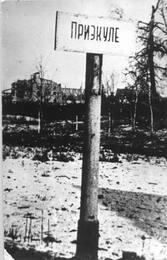
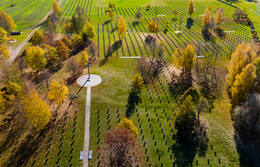

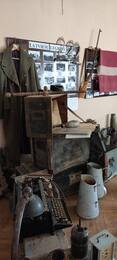

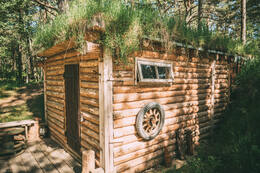

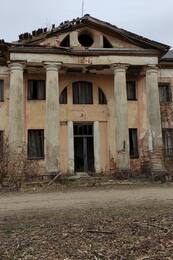
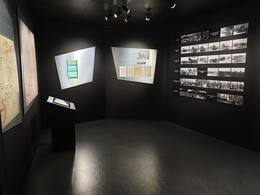
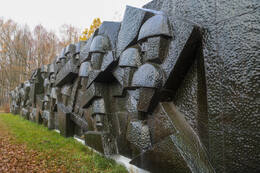
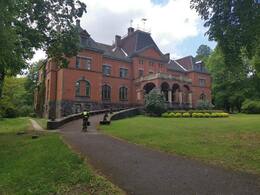
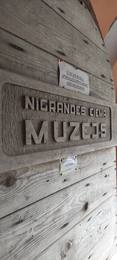
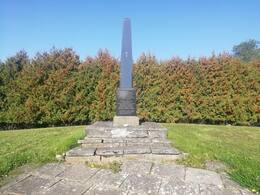

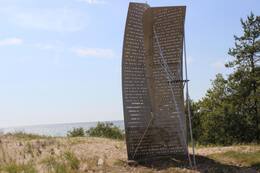
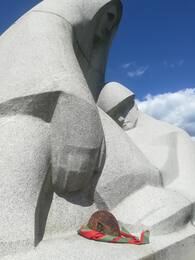

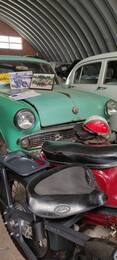
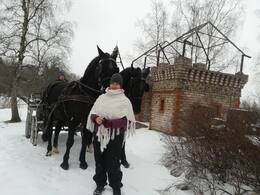

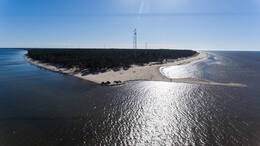

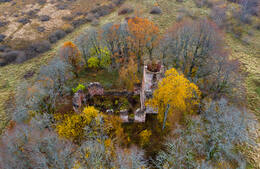
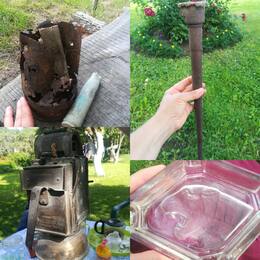

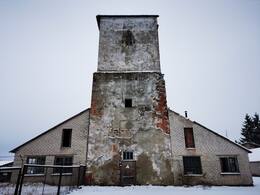
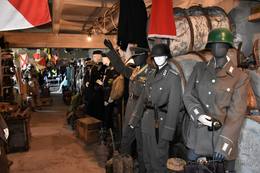

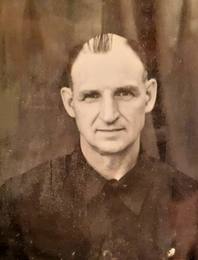
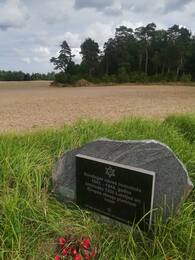
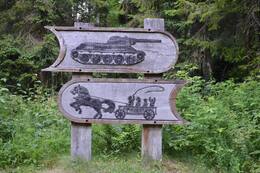

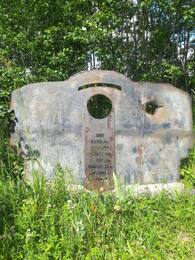

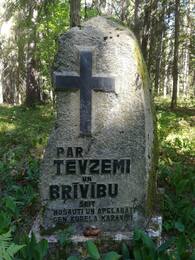
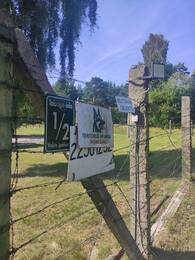
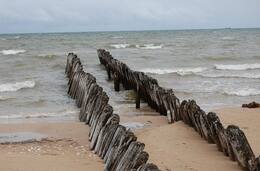
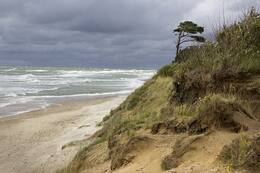
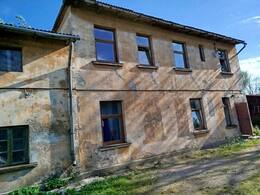
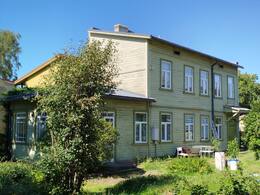
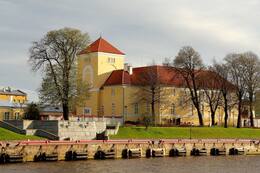
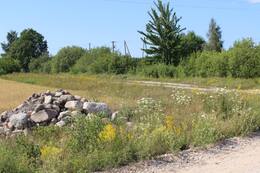


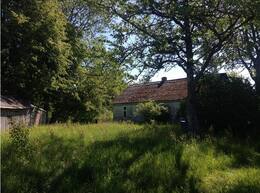
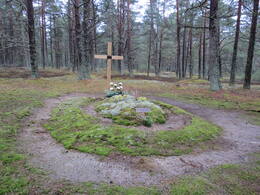

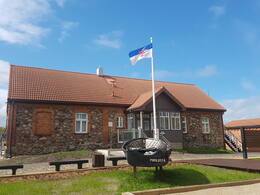

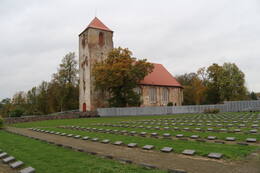
Parandage - armeegrupp kandis nime Kuramaa.